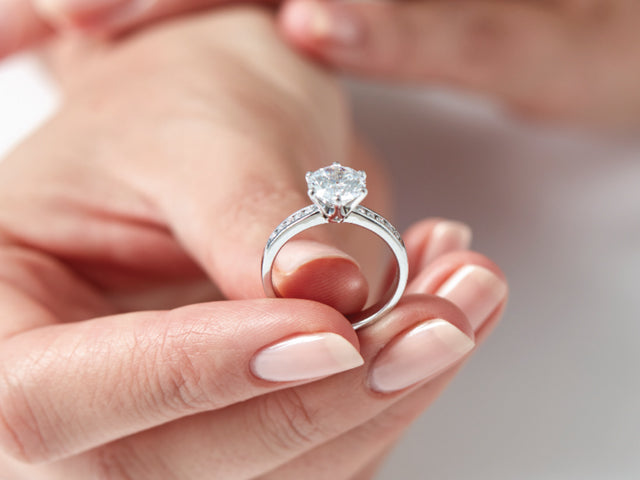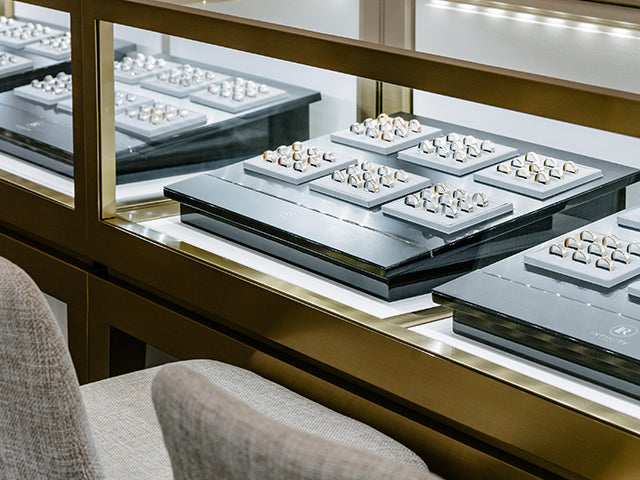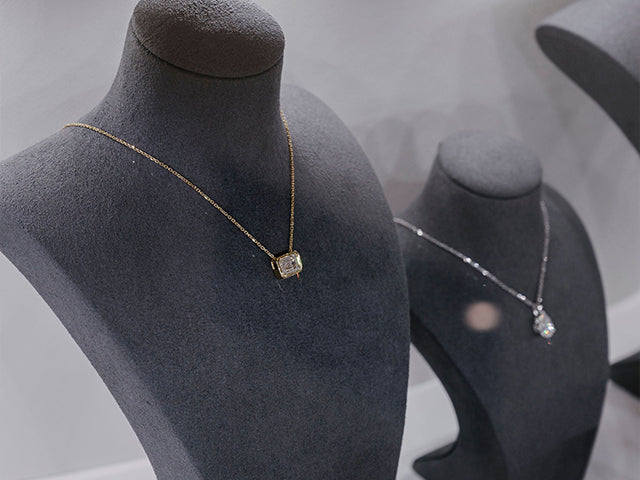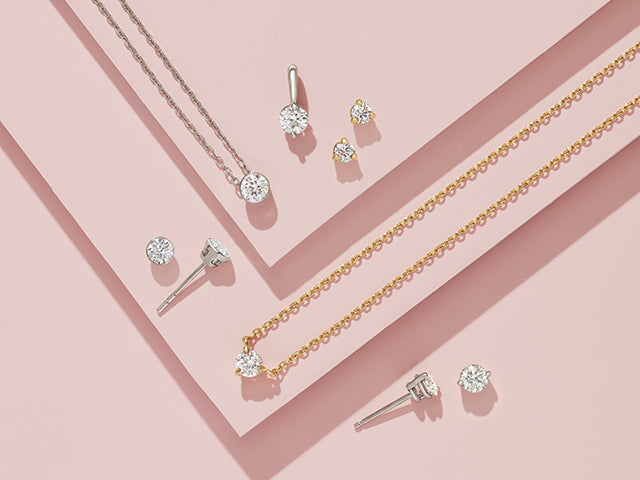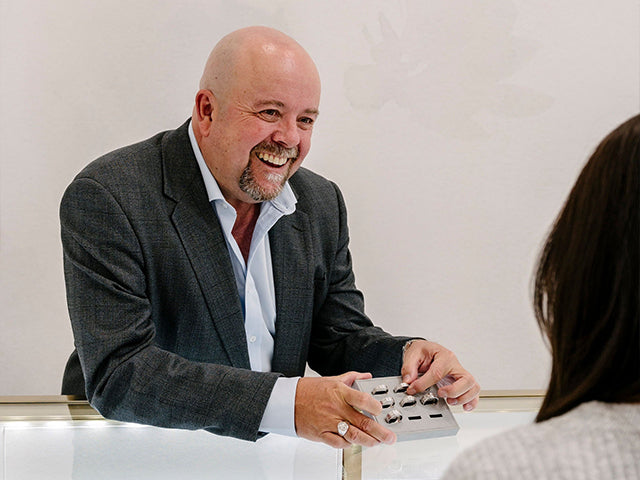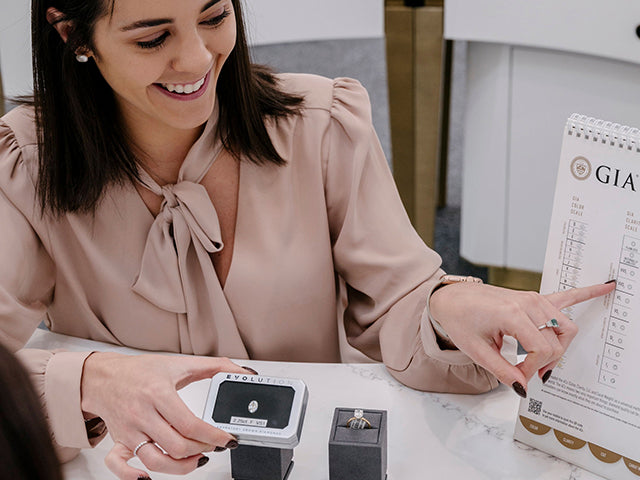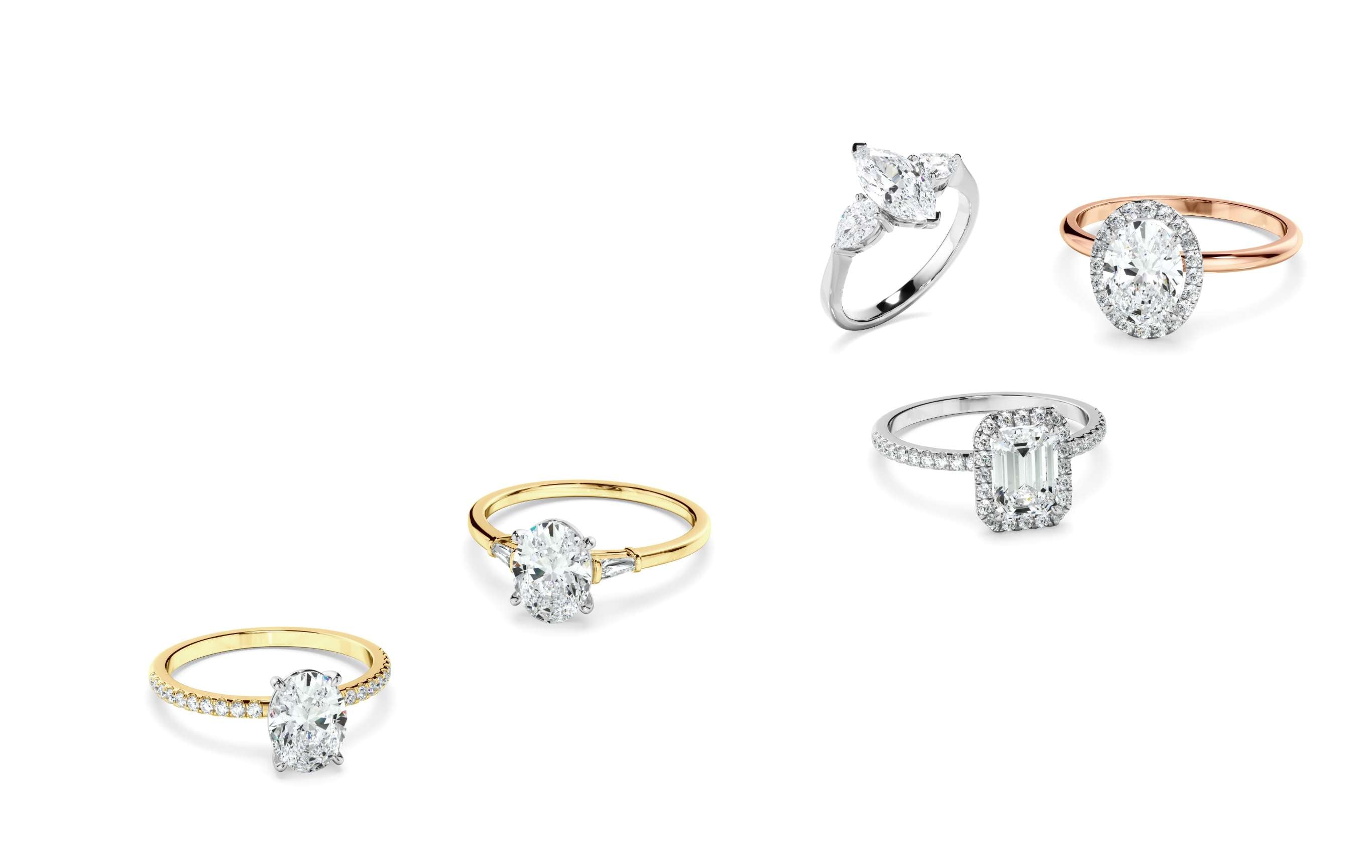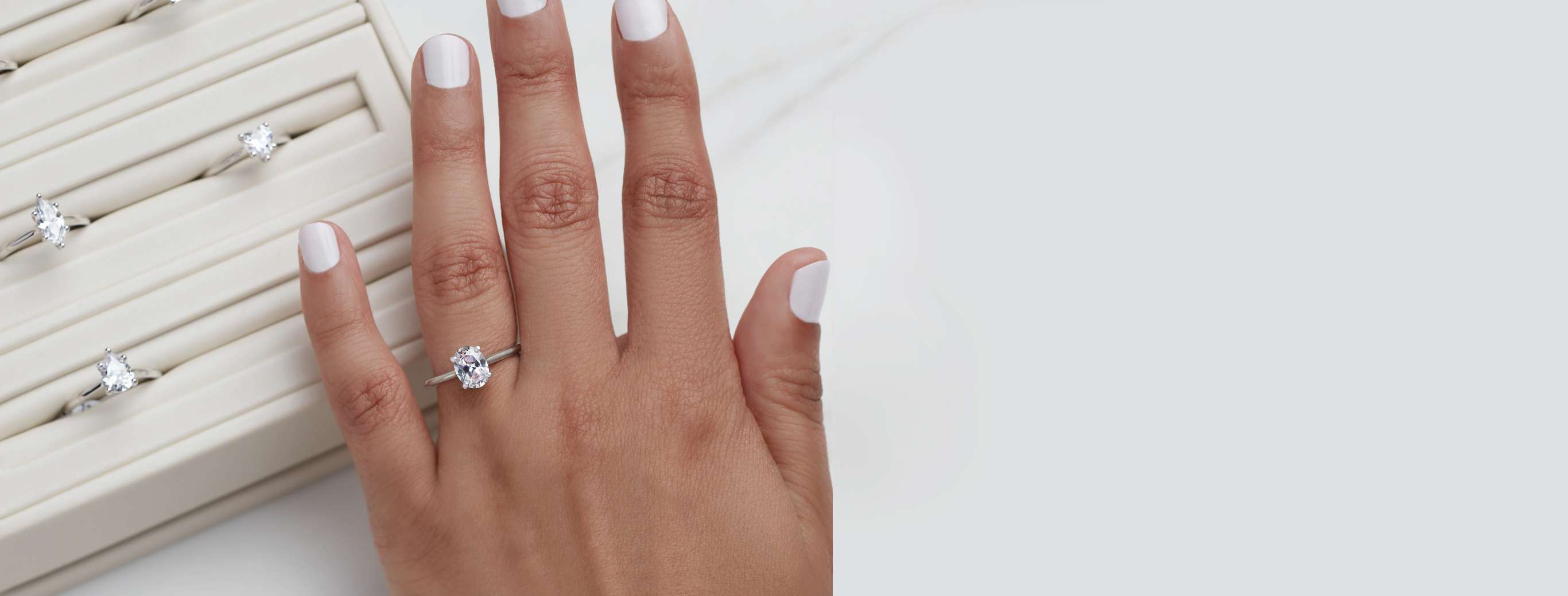An understanding of the Four Cs of diamond selection helps you appreciate everything about your diamond and its unique characteristics.
Among the Four Cs, the cut stands above the rest, it’s what unlocks the brilliance and beauty of your diamond, allowing it to sparkle at its fullest potential.
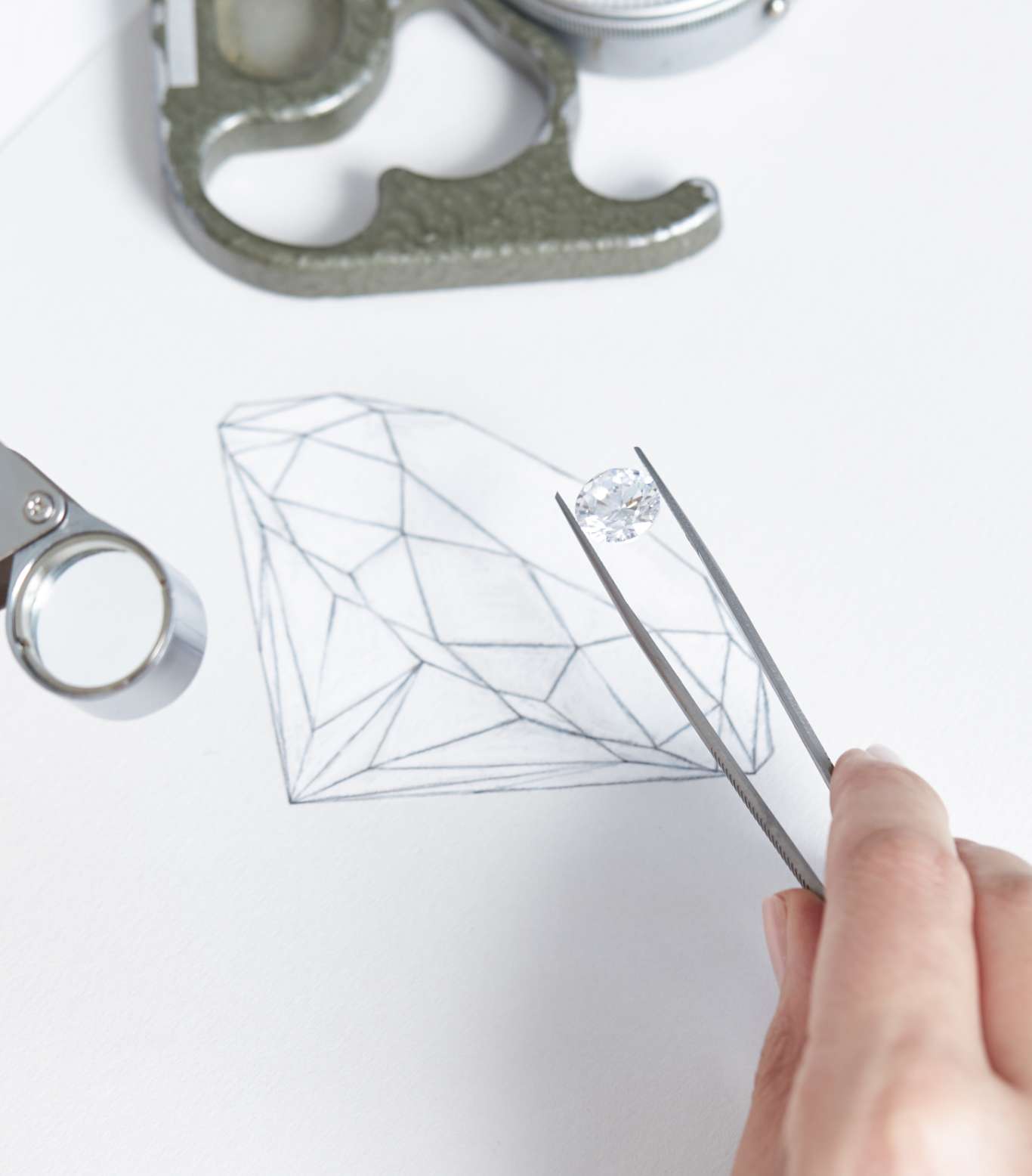
Cut
The innate beauty of a diamond begins with how well it interacts with light – and that comes from the precision of its cut. A perfect cut requires experienced and precise workmanship so it can be shaped with perfect symmetry and proportion to give it fire and optimise its sparkle.
It’s the quality of the cut that maximises a diamond’s value, and it’s important to remember that even a high-grade diamond can appear dull and lifeless without a high-grade cut.
When diamonds are cut with the correct proportions, light is returned through the top (or table) of the diamond. If the cut is too shallow, light leaks out the bottom; and if it is too deep, the light escapes from the sides.
Expert Symmetry Facets precisely matching in size, shape and alignment create brilliance.
Excellent Proportion Light reflects brightly.
Too Deep Light escapes through the side.
Too Shallow Light escapes at the bottom.
Misaligned Facets Asymmetry interrupts the movement of light from one facet to the next.
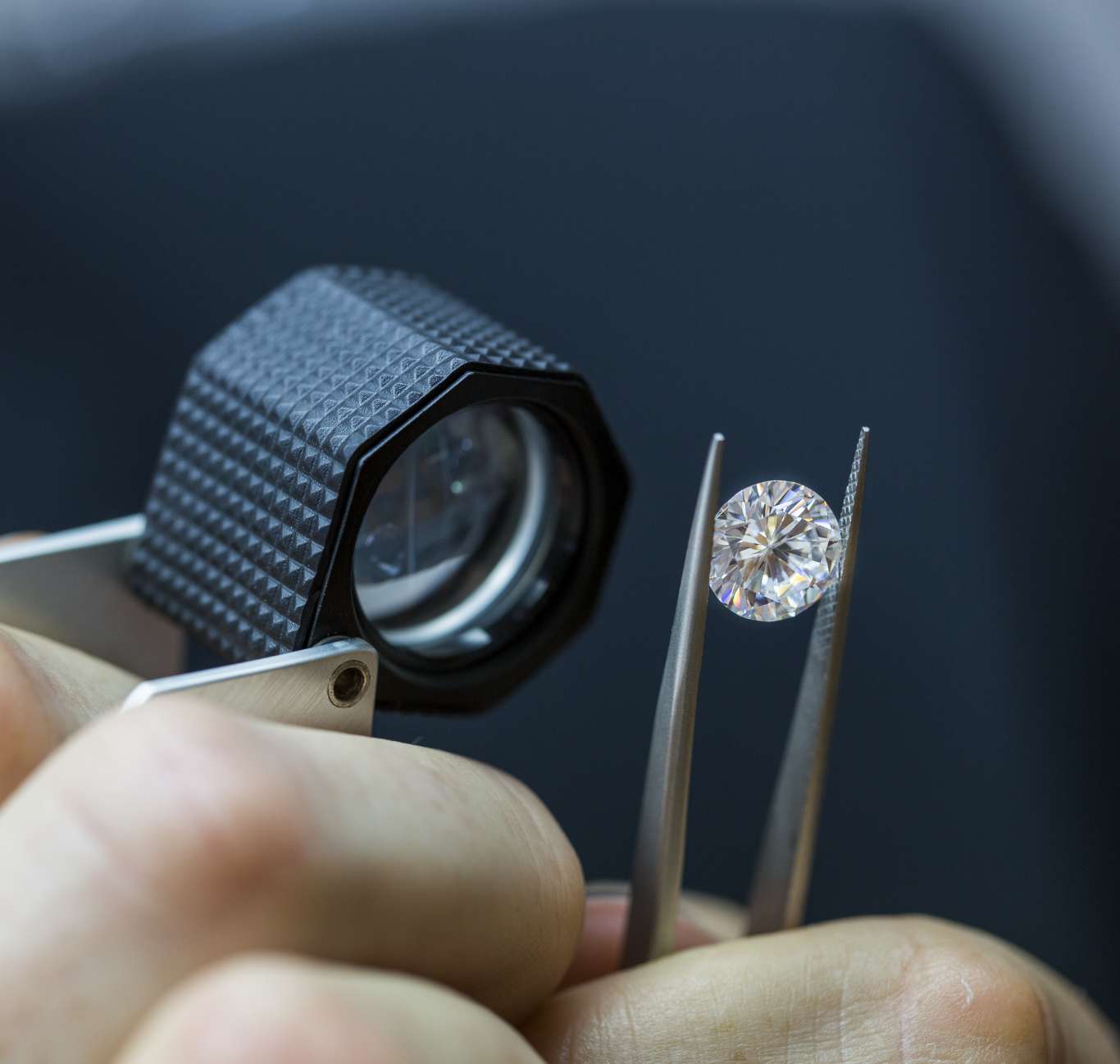
Clarity
Formed deep within the earth, diamonds are made from carbon that has been exposed to enormous heat and pressure over millions of years. This natural process exposes diamonds to a number of characteristics that affect their clarity.
Internal characteristics are called ‘inclusions’ and external characteristics are called ‘blemishes’.
A diamond’s clarity is the measure of its purity. Stones are graded by the visibility of its inclusions and blemishes under magnification. It involves identifying the number, size, relief, nature and position of these characteristics and how these affect the overall appearance of the stone.
It’s rare for a diamond to be perfectly pure, but the closer it comes, the higher its value.
The GIA Diamond Clarity Scale has six categories which form a total of 11 specific grades.
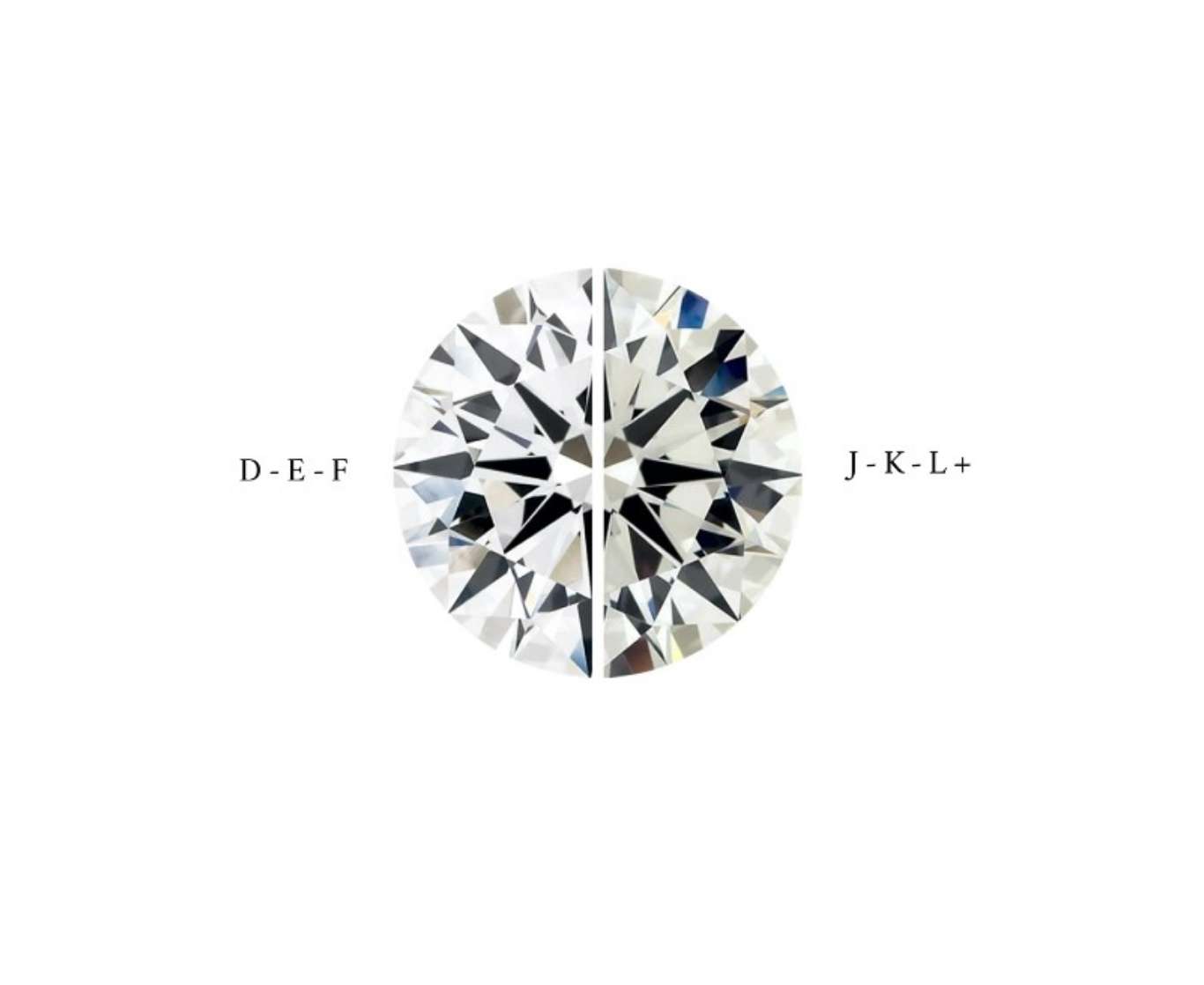
Colour
Like anything natural, slight variations will always occur. Most diamonds have some tint or colouring, and the closer to ‘colourless’ a diamond is, the rarer and more valuable it is. According to the GIA, a chemically pure and structurally perfect diamond has no hue and appears like a drop of pure water.
While many diamond colour distinctions are so subtle they are invisible to the untrained eye, they still have a big impact on a diamond’s quality and price.
The GIA classifies a diamond with a letter grade from D to Z by comparing a diamond to master stones representing the colour grades on the GIA scale.
Typically, Whitakers uses diamonds that fall within the ‘Near Colourless’ to ‘Colourless’ ranges.
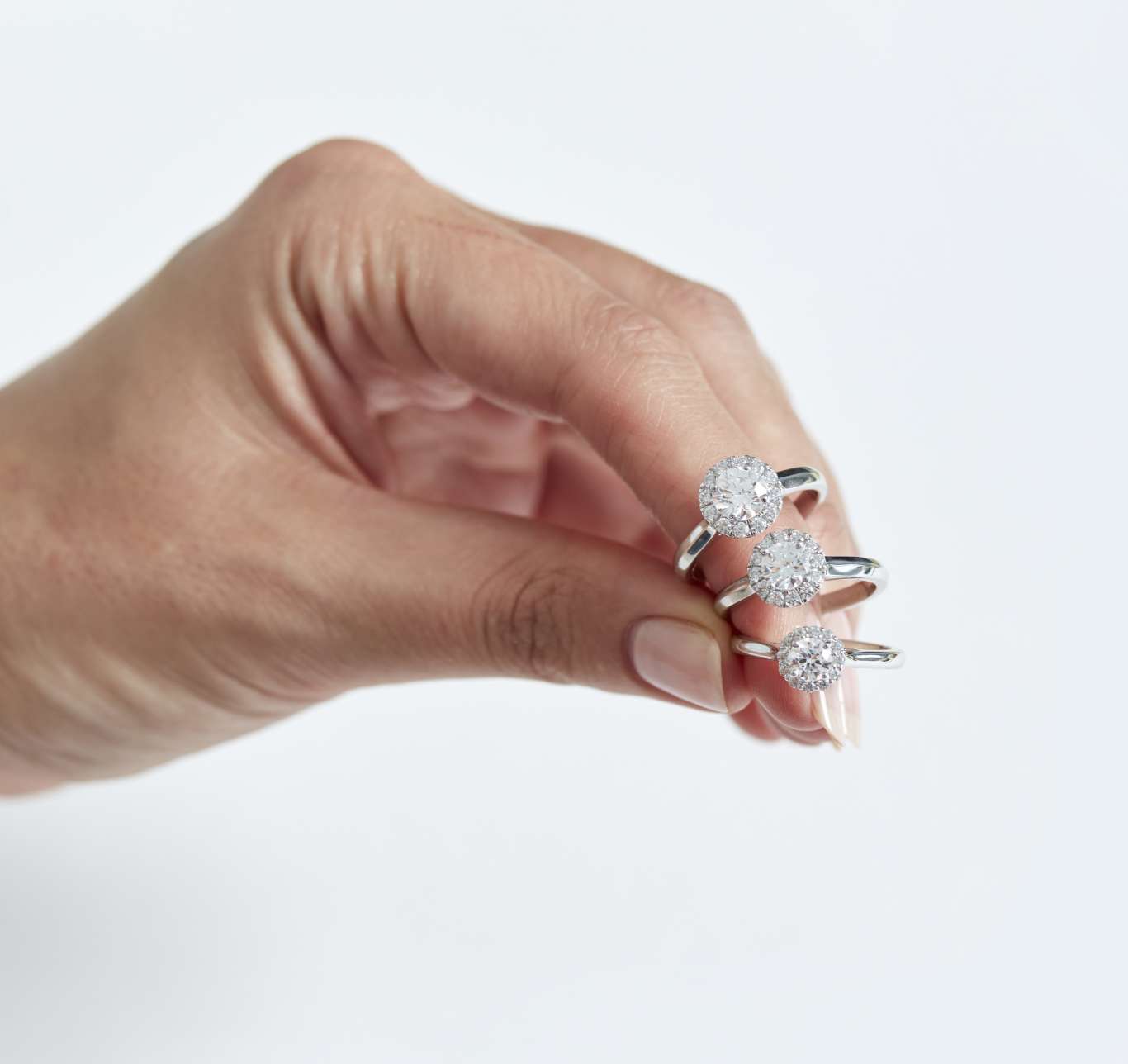
Carat
Many people believe the term carat refers to the size, but in fact, it actually refers to the total weight of a diamond.
Each carat is divided into 100 points and it’s this that allows the very precise measurement that enables an expert to determine a diamond’s exact size. A diamond weighing less than a carat is often described by its points alone – for example, a diamond weighing 0.4 carats might be referred to as a ‘forty pointer’.
A diamond’s value is determined using the Four Cs, not just carat weight. However, you can expect a diamond’s price to increase with its carat weight because larger diamonds are rare and usually more sought after. At the same time, two diamonds of equal weight can have very different values and prices depending on their cut, clarity and colour.
Some weights are considered ‘magic sizes’. These include half-carat, three-quarter carat and one carat. When you are buying, it’s a good tip to keep in mind that the visual difference between a .99 carat and a carat will be unnoticeable, but the price difference will!
Shape
Diamond shape refers to the geometric appearance of a diamond. Diamond shapes are categorised into two grounds: round diamonds and fancy shape diamonds. Round diamonds, also known as round brilliant cuts, are the most traditional shape. Fancy shape diamonds refer to any diamond that is not a round brilliant.
Read More on ShapesAt Whitakers, we know how important picking the perfect diamond is – and what it represents in your life. It’s our role to help you in your search for the perfect diamond ring. Our staff are professionally-trained experts who can answer all your questions, help you compare diamonds that fall within your budget and then make an educated decision on selecting the the perfect stone for you.
